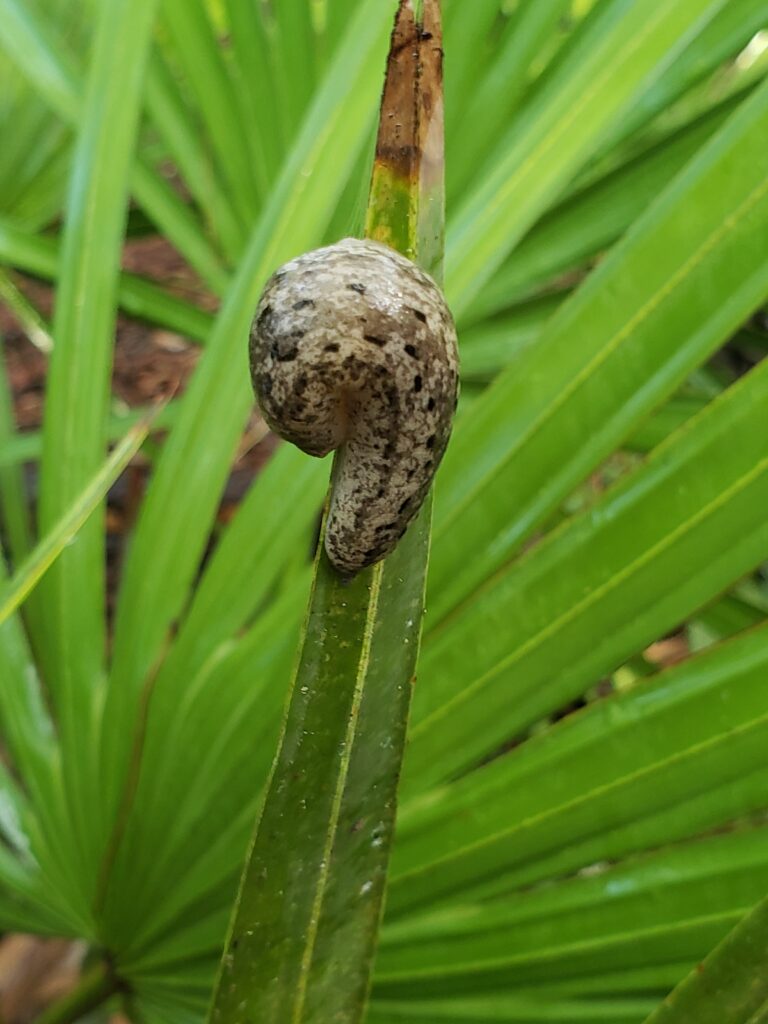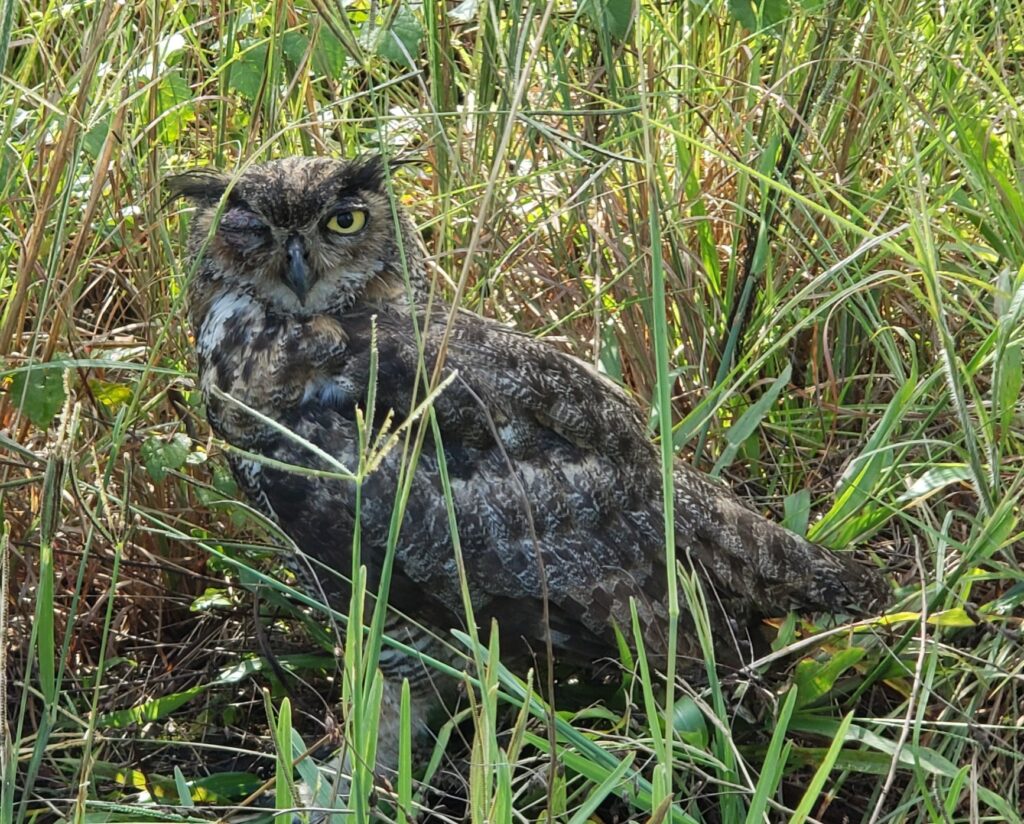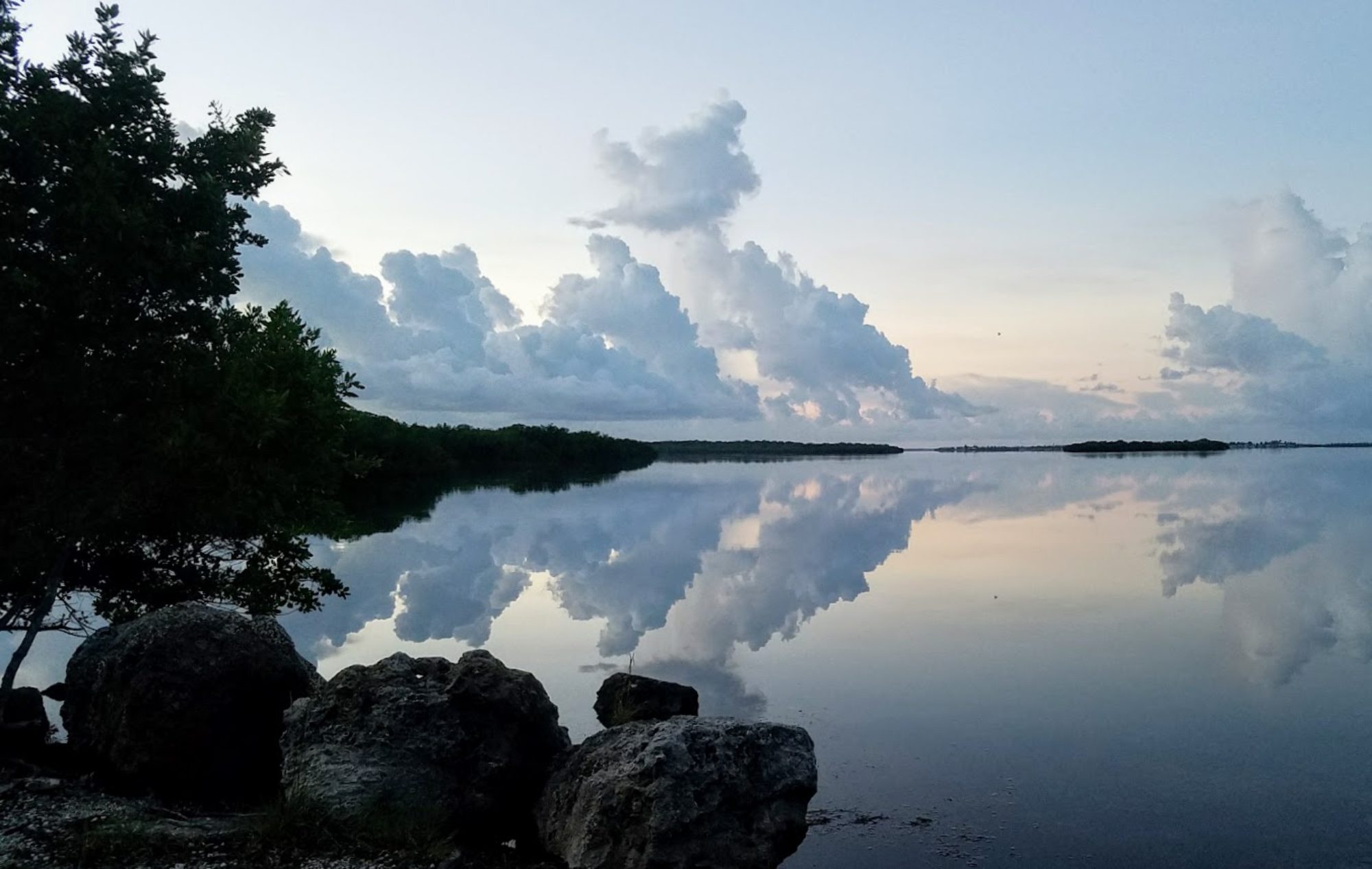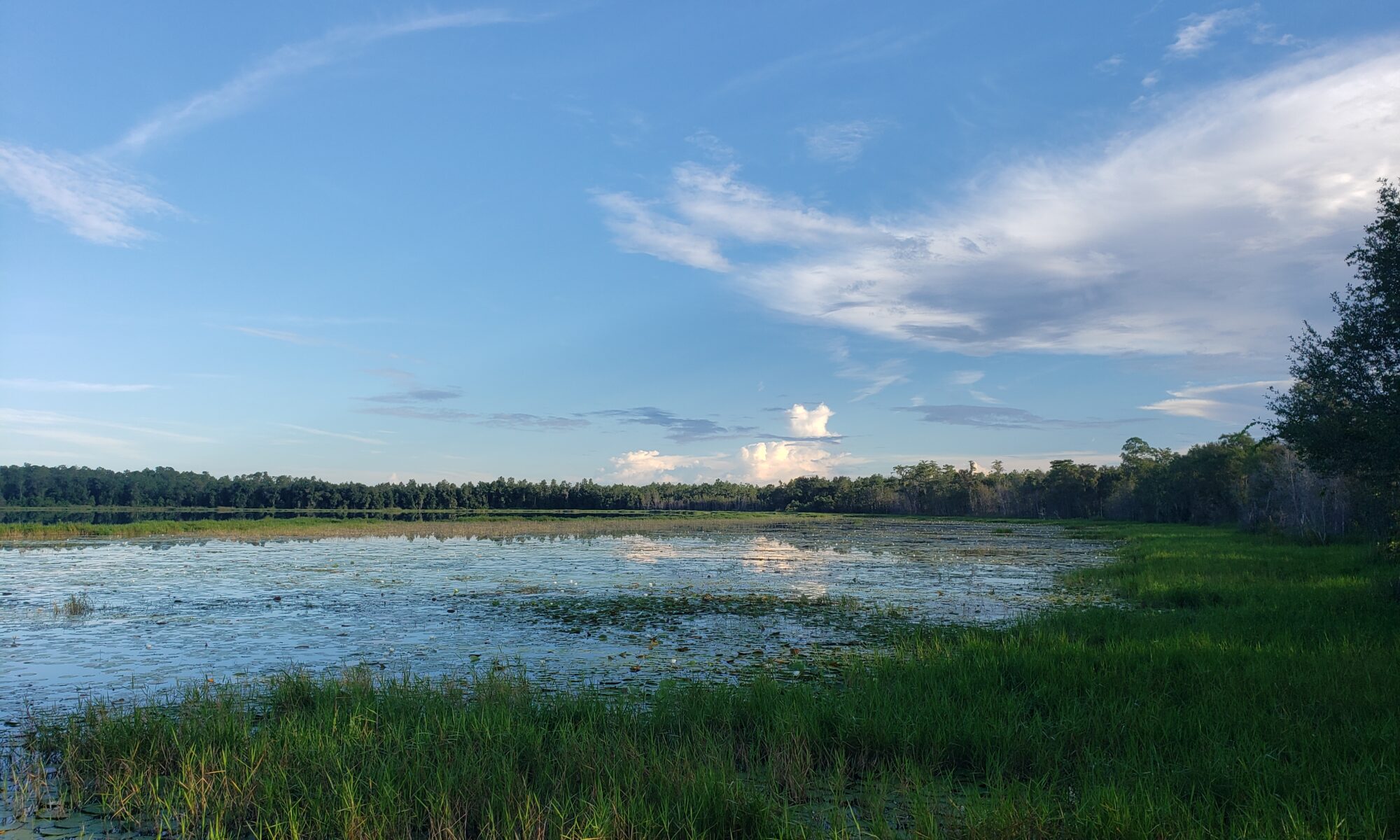Steve and I have begun a new adventure together, and it’s one that will guide many of our land-based trips for the rest of this year and well into next. You know that we are big fans of State Forests, and while I was doing some research for an upcoming Panhandle trip, I was reminded of the State Forest Trailwalker program. So, we’re now official Trailwalkers – watch for a later article about what that entails. It’s a fun way to learn more about Florida’s magnificent State Forests.
We got up early yesterday and headed over to Volusia County to check out Tiger Bay State Forest’s Buncombe Hill Trail. This was a very short 2 mile loop trail, but we thoroughly enjoyed it and will return to Tiger Bay. It looks like there is a lot to enjoy there, including fishing, small boat access, picnicking, camping, hunting, and of course, hiking the miles of trails and forest roads. Equestrian trails and camping are also available.
Funds from the Environmentally Endangered Lands Program, Preservation 2000, Florida Forever, and Save Our River have been used to acquire lands for Tiger Bay State Forest since 1979. The Forest comprises 27,395 acres, about half of which is pine forest with the remainder being wetlands.
We visited Indian Lake Recreational Area with the goal of hiking Buncombe Hill Trail. Before we even got on the trail, we checked out the two picnic areas and some vegetation along the southeast tip of Indian Lake. Beautyberry was in evidence, living up to its name in truly spectacular fashion, and we also noticed some beautiful spiderwebs. The pier at Indian Lake would be great for a sunrise breakfast, I think, and there is a covered pavilion with several picnic tables under it. There’s another set of picnic tables under tree cover. Composting toilets provide toilet access but there is no running water.

The short two-mile Buncombe Hill loop trail covers sand pine scrub and xeric oak hammock. We noticed lots of Florida rosemary, one of my favorite plants. Turkey oaks, sand pines and sand live oaks, slash pine, and live oak were the dominant trees, but we also recognized red bay and loblolly bay. There were some fruiting prickly pear cactus and of course, reindeer moss. The forest air smelled of humus and pine. When you sign in at the beginning of the trail, be sure to pick up the brochure that describes the trail. There are numbered signposts on the trail that are described in the brochure – we love these interpretive tools!
The trail is well marked with green blazes; double blazes mark direction changes. There is interpretive signage identifying many of the plants along the way. Some of these were new to us (wild olive and garberia are two that I remember), so we have a whole new group of plants to identify in other locations.
We heard (but did not see) upland birds including nuthatches and saw cardinals. I found a slug with a nice pattern of grays and browns…hard to think of a slug as beautiful, but this one was. We noticed lots of Liatris getting ready to bloom. This is a tall plant with an erect flower spike. The flowers are tiny and clustered on the stalk. It looks a bit feathery and is commonly called gayfeather or marsh blazing star. We also noticed milkweed and fungi.

Before and after the halfway turning point, there are shaded benches. Take a moment to get a drink of water, relax, and enjoy the sounds and smells of the forest here. These short breaks are so restorative and when you’re hiking with someone you love, provide great selfie ops.

When we were within sight of the end of the trail, Steve noticed something sitting in a shaded spot. At first, we weren’t sure if we were seeing a bobcat, a large bird, or just a stump. It was very still. As we moved closer we could see it moving as well, so we were able to rule out the stump. Eventually it was clearly an owl, but it was behaving very strangely. It stood up, turned and looked right at us, but did not fly away. When we were within about 10 feet of it, it tried to fly out of the path, but it looked like perhaps its right wing was broken. When we got very close, we could see that its right eye looked raw and was swollen shut. I was convinced that it was badly injured because of the way it moved and that poor eye. Our attempt at owl rescue will be described in a future article.

Whatever happens with the owl (now named Kevin), I will update the blog to provide closure to this story. If the bird doesn’t make it, we will know we did everything we could and learned how to better help next time. Should this bird recover (and if you pray, please pray for Kevin!), Dee and Steve and I will be allowed to return it to where we rescued it. That is going to be a happy day!
UPDATE: Sadly, Kevin did not survive.
I cannot promise that you will rescue an owl if you visit the Buncombe Hill Trail, but I can promise that you’ll have a pleasant experience, inhale some restorative forest air, and see some beautiful sights. Enjoy!

IF YOU FIND AN ANIMAL THAT NEEDS ASSISTANCE, Florida Fish and Wildlife Commission may be able to provide guidance on what to do. You can reach them at 888-404-3922. If are in Central Florida and find an injured bird, please call Avian Reconditioning Center at 407-461-1056. They are currently closed due to coronavirus and are only on site from 9:30 – 1:30 Monday-Friday and 9:30-4:30 on Saturdays. If they do not answer, please leave a message and they will return your call as soon as possible. They are a small volunteer organization and do not have the staffing to go out for rescues. If you can get the bird to them, they are happy to do whatever they can to make it well, and return it to the wild.


A very pleasant adventure.
I would recommend this hike to anyone in the Central Florida area.
So nice to see what this area was once like.
Happy trails,
Steve